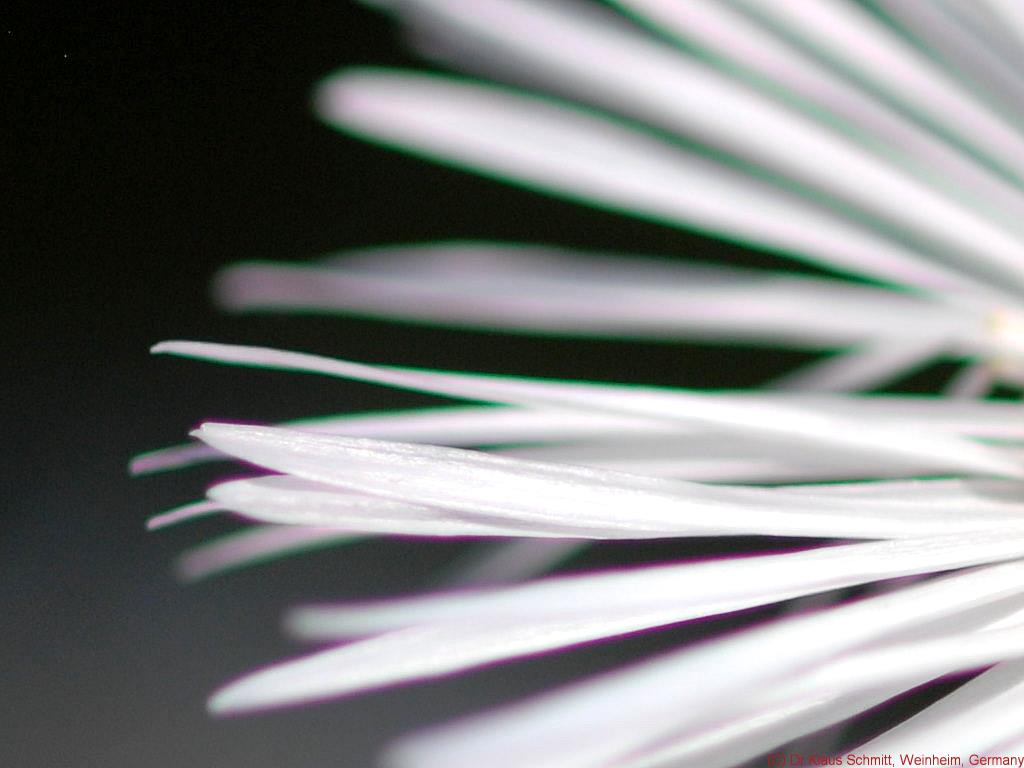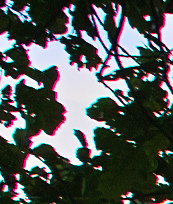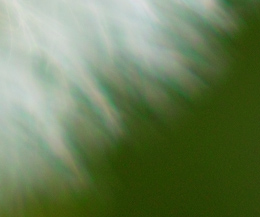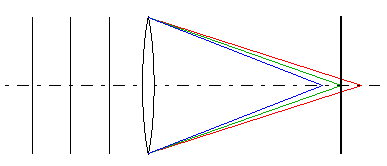| View previous topic :: View next topic |
| Author |
Message |
gillbod
Joined: 24 Aug 2010
Posts: 28
|
 Posted: Tue Aug 24, 2010 11:28 am Post subject: APO Telezenitar 135/2.8 info? Posted: Tue Aug 24, 2010 11:28 am Post subject: APO Telezenitar 135/2.8 info? |
 |
|
gillbod wrote:
Hi all!
First post here. I've dabbled with a fair bit of manual focus glass in the past, but wanted information on the APO Telezenitar 135/2.8.
The little I've heard about it suggests that it might be a genuinely apochromatic lens. But I haven't seen too many samples from it (the few I managed to hunt down did look quite nice, though!).
I was wondering if anyone could give me any information at all on it. Sample shots would be great, if possible.
Thanks for your help! |
|
| Back to top |
|
 |
vulko
|
 Posted: Tue Aug 24, 2010 11:40 am Post subject: Posted: Tue Aug 24, 2010 11:40 am Post subject: |
 |
|
vulko wrote:
APO Telezenitar 4.5/300 is much better than MC Tair 3S optically. More sharpness with Zenitar for sure.
135mm has also lot's of complements. The colors and bokeh are claimed the best what was ever produced in russia.
The price in 2006 when it came out was 140 usd... Now ppl sell it for 200... Doesn't look like a good purchase, but if you rly like the APO in the title... |
|
| Back to top |
|
 |
gillbod
Joined: 24 Aug 2010
Posts: 28
|
 Posted: Tue Aug 24, 2010 11:53 am Post subject: Posted: Tue Aug 24, 2010 11:53 am Post subject: |
 |
|
gillbod wrote:
| vulko wrote: |
APO Telezenitar 4.5/300 is much better than MC Tair 3S optically. More sharpness with Zenitar for sure.
135mm has also lot's of complements. The colors and bokeh are claimed the best what was ever produced in russia.
The price in 2006 when it came out was 140 usd... Now ppl sell it for 200... Doesn't look like a good purchase, but if you rly like the APO in the title... |
it's not the apo in the title i'm after; it's the apo in the lens.
if it resembles a CV 125/2.5 in iq, then 200 usd is not looking too expensive. the question is how 'apo' is 'apo', and i was wondering if anyone here had any ideas on that front. |
|
| Back to top |
|
 |
vulko
|
 Posted: Wed Aug 25, 2010 9:57 am Post subject: Posted: Wed Aug 25, 2010 9:57 am Post subject: |
 |
|
vulko wrote:
Found a nice thread about the good old russian lenses.
There's a sample taken with APO Telezenitar 135mm:
http://s54.radikal.ru/i143/1007/4d/00d2724ebcc2.jpg
Here's the link to this thread, m.b. you'll find more info using google translator 
http://club.foto.ru/forum/11/261862 |
|
| Back to top |
|
 |
gillbod
Joined: 24 Aug 2010
Posts: 28
|
 Posted: Wed Aug 25, 2010 11:06 am Post subject: Posted: Wed Aug 25, 2010 11:06 am Post subject: |
 |
|
gillbod wrote:
that's a great thread. thanks for sharing!
won't do my lens buying addiction much good... |
|
| Back to top |
|
 |
AhamB

Joined: 22 Jun 2008
Posts: 733
Location: Germany
|
 Posted: Wed Aug 25, 2010 12:06 pm Post subject: Posted: Wed Aug 25, 2010 12:06 pm Post subject: |
 |
|
AhamB wrote:
Funny how the Russians write Canon as Кэноне with the e at the end; isn't that pronounced as Canonyeh? 
Last edited by AhamB on Wed Aug 25, 2010 12:07 pm; edited 1 time in total |
|
| Back to top |
|
 |
kds315*


Joined: 12 Mar 2008
Posts: 16664
Location: Weinheim, Germany
Expire: 2021-03-09
|
 Posted: Wed Aug 25, 2010 12:07 pm Post subject: Posted: Wed Aug 25, 2010 12:07 pm Post subject: |
 |
|
kds315* wrote:
The APO, would only show if you shoot (or find) an image like that

with strong contrasts and OOF parts shot wide open
_________________
Klaus - Admin
"S'il vient a point, me souviendra" [Thomas Bohier (1460-1523)]
http://www.macrolenses.de for macro and special lens info
http://www.pbase.com/kds315/uv_photos for UV Images and lens/filter info
https://www.flickr.com/photos/kds315/albums my albums using various lenses
http://photographyoftheinvisibleworld.blogspot.com/ my UV BLOG
http://www.travelmeetsfood.com/blog Food + Travel BLOG
https://galeriafotografia.com Architecture + Drone photography
Currently most FAV lens(es):
X80QF f3.2/80mm
Hypergon f11/26mm
ELCAN UV f5.6/52mm
Zeiss UV-Planar f4/60mm
Zeiss UV-Planar f2/62mm
Lomo Уфар-12 f2.5/41mm
Lomo Зуфар-2 f4.0/350mm
Lomo ZIKAR-1A f1.2/100mm
Nikon UV Nikkor f4.5/105mm
Zeiss UV-Sonnar f4.3/105mm
CERCO UV-VIS-NIR f1.8/45mm
CERCO UV-VIS-NIR f4.1/94mm
CERCO UV-VIS-NIR f2.8/100mm
Steinheil Quarzobjektiv f1.8/50mm
Pentax Quartz Takumar f3.5/85mm
Carl Zeiss Jena UV-Objektiv f4/60mm
NYE OPTICAL Lyman-Alpha II f1.1/90mm
NYE OPTICAL Lyman-Alpha I f2.8/200mm
COASTAL OPTICS f4/60mm UV-VIS-IR Apo
COASTAL OPTICS f4.5/105mm UV-Micro-Apo
Pentax Ultra-Achromatic Takumar f4.5/85mm
Pentax Ultra-Achromatic Takumar f5.6/300mm
Rodenstock UV-Rodagon f5.6/60mm + 105mm + 150mm
|
|
| Back to top |
|
 |
AhamB

Joined: 22 Jun 2008
Posts: 733
Location: Germany
|
 Posted: Wed Aug 25, 2010 12:10 pm Post subject: Posted: Wed Aug 25, 2010 12:10 pm Post subject: |
 |
|
AhamB wrote:
| kds315* wrote: |
The APO, would only show if you shoot (or find) an image like that
with strong contrasts and OOF parts shot wide open |
Longitudinal/bokeh CA doesn't only happen with macro shots. Besides, there is purple fringing too. Apochromaticity doesn't guarantee though that there is no bokeh CA -- just no LoCA and lateral CA (at a certain aperture, not always true wide open). |
|
| Back to top |
|
 |
no-X


Joined: 19 Jul 2008
Posts: 2495
Location: Budejky, Czech Republic
|
 Posted: Wed Aug 25, 2010 12:16 pm Post subject: Posted: Wed Aug 25, 2010 12:16 pm Post subject: |
 |
|
no-X wrote:
longitudinal CA = axial CA = bokeh CA
purple fringing is a form of axial CA, but it isn't always caused by lens - it can by the camera itself (by sensor microlenses)
_________________
(almost) complete list of Helios lenses |
|
| Back to top |
|
 |
vulko
|
 Posted: Wed Aug 25, 2010 12:20 pm Post subject: Posted: Wed Aug 25, 2010 12:20 pm Post subject: |
 |
|
vulko wrote:
| Quote: |
that's a great thread. thanks for sharing!
won't do my lens buying addiction much good... |
You are very welcome. I've looked through the first 5 pages... the most interesting info was on the 1st though. And there's over 600 pages...
| AhamB wrote: |
Funny how the Russians write Canon as Кэноне with the e at the end; isn't that pronounced as Canonyeh?  |
Missprinted. We say Кэнон, pronounced almost the same. English A is like hey, russian Э is like ehh.
There's a slang word сапог for canon. Looks pretty much like the original, but means boot.  |
|
| Back to top |
|
 |
AhamB

Joined: 22 Jun 2008
Posts: 733
Location: Germany
|
 Posted: Wed Aug 25, 2010 1:31 pm Post subject: Posted: Wed Aug 25, 2010 1:31 pm Post subject: |
 |
|
AhamB wrote:
| no-X wrote: |
longitudinal CA = axial CA = bokeh CA
purple fringing is a form of axial CA, but it isn't always caused by lens - it can by the camera itself (by sensor microlenses) |
I've been told (by very knowledgeable people) that according to the definition, longitudinal/axial CA is in the focus plane, which bokeh CA is not. Cyan colors can be in the far OOF background, which has no connection with the focus plane whatsoever, which is why an APO lens can display this kind of CA and still be truly apochromatic according to the definition.
There is no official term for bokeh CA, because it is not truly CA (there are no physical descriptions of chromatic abberations in OOF rendering, because it is not of interest in most applications I'd think -- it's more of an aesthetic thing).
Sensor microlenses introducing PF has never been proven.
http://toothwalker.org/optics/chromatic.html (bottom of the article)
http://www.cs.duke.edu/~parr/photography/faq.html#purplefringe |
|
| Back to top |
|
 |
no-X


Joined: 19 Jul 2008
Posts: 2495
Location: Budejky, Czech Republic
|
 Posted: Wed Aug 25, 2010 2:07 pm Post subject: Posted: Wed Aug 25, 2010 2:07 pm Post subject: |
 |
|
no-X wrote:
Lateral CA is in focus plane. Longitudinal (axial) out of focus plane. Here is a good article explaining details:
http://toothwalker.org/optics/chromatic.html
here are some other examples of...
lateral CA:

axial CA:




APO correction per se doesn't mean, that the lens produce less CA than achromatic lens. Only that it was corrected to focus three wavelengths at once. Final level of CA depends on the exact wavelengths and character of the secondary spectrum curve.
_________________
(almost) complete list of Helios lenses |
|
| Back to top |
|
 |
Anu

Joined: 14 Apr 2009
Posts: 879
|
 Posted: Wed Aug 25, 2010 2:40 pm Post subject: Posted: Wed Aug 25, 2010 2:40 pm Post subject: |
 |
|
Anu wrote:
I've posted a link to a sub-page of this web page before. It is highly recommended reading for everyone who wants to understant all kinds of optical aberrations better, including axial and transverse (lo and la  ) CA: http://toothwalker.org/optics.html ) CA: http://toothwalker.org/optics.html |
|
| Back to top |
|
 |
AhamB

Joined: 22 Jun 2008
Posts: 733
Location: Germany
|
 Posted: Wed Aug 25, 2010 4:52 pm Post subject: Posted: Wed Aug 25, 2010 4:52 pm Post subject: |
 |
|
AhamB wrote:
Two people posting the same link as the one I provided in my own post.... 
@no-x: please read the box at the left side of that page, about halfway down:
| Quote: |
| Strictly speaking color artifacts in out-of-focus parts of the image should not be called chromatic aberration, since the aberration is only defined for the plane of focus. However, the cause is the same (dispersion) and 'out-of-focus color' or 'defocus dispersion,' or whatever is the best name for the phenomenon, is an aberration in the sense of anomalous behavior. |
I am guessing that LoCA then is CA that is still within the DoF and your examples are not LoCA but "bokeh CA" or defocus dispersion. |
|
| Back to top |
|
 |
no-X


Joined: 19 Jul 2008
Posts: 2495
Location: Budejky, Czech Republic
|
 Posted: Wed Aug 25, 2010 7:22 pm Post subject: Posted: Wed Aug 25, 2010 7:22 pm Post subject: |
 |
|
no-X wrote:
In fact it's still the same problem having the same cause.
The axial CA is caused by lens, which isn't able to focus all wavelengths on the same plain:

The definition takes into account a situation, where one wavelength is in focus, while the others aren't. However, if you defocus slightly so none of the wavelength will be exactly in focus, the problem will remain - from the same reason.
| Quote: |
| I am guessing that LoCA then is CA that is still within the DoF |
1 wavelength is within the DOF, 2 are out. That's the reason of LoCA. If all wavelength would be in DOF, there would be no LoCA 
It is only playing with words - I'll try to give you an example. Look at the flower which Klaus (kds315*) posted a few hours ago. The flower is in focus and there are color artifacts. From your definition you would call it LoCA. Open it in photoshop and crop only the upper half of the image. Only out of focus part of the image will remain. There will be nothing in focus on the image. How would you call the color artifact now? It would be out of focus example, so will it be LoCA or not? It doesn't make much sense, does it? 
Axial color artifacts are always caused by the issue, that one wavelength is (more) in focus than the others. You can separate terms LoCA (where one wl is in focus and others aren't) and bokeh CA (where all wls are out of focus, but by different measure), but you can't separate these phenomenons, because they have one cause and lens which suffer from one will always suffer even from the second one.
_________________
(almost) complete list of Helios lenses |
|
| Back to top |
|
 |
vulko
|
 Posted: Wed Aug 25, 2010 7:47 pm Post subject: Posted: Wed Aug 25, 2010 7:47 pm Post subject: |
 |
|
vulko wrote:
Guys please, it's not CA topic. |
|
| Back to top |
|
 |
|
|
|
You cannot post new topics in this forum
You cannot reply to topics in this forum
You cannot edit your posts in this forum
You cannot delete your posts in this forum
You cannot vote in polls in this forum
|
